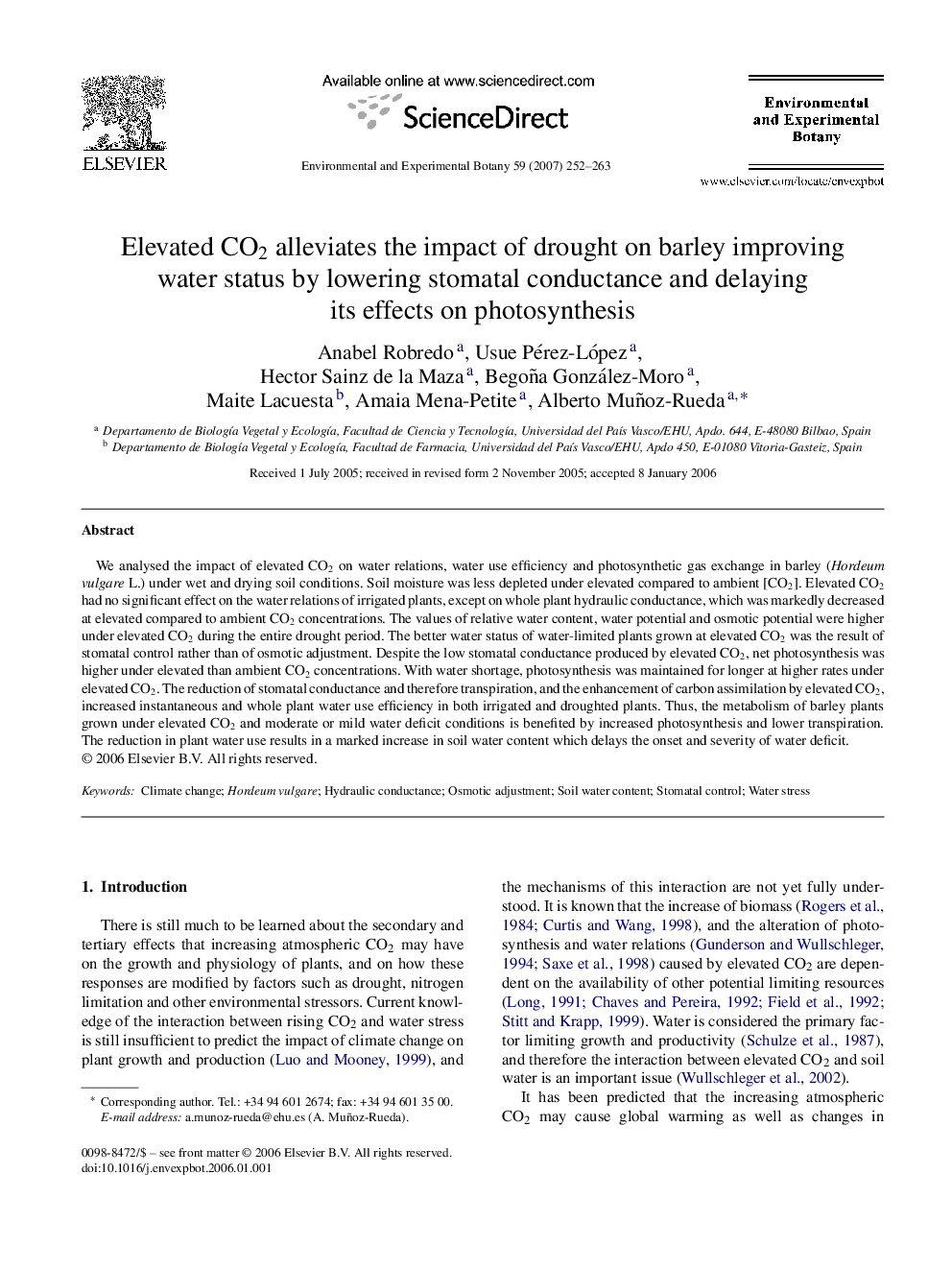| Article ID | Journal | Published Year | Pages | File Type |
|---|---|---|---|---|
| 4555692 | Environmental and Experimental Botany | 2007 | 12 Pages |
We analysed the impact of elevated CO2 on water relations, water use efficiency and photosynthetic gas exchange in barley (Hordeum vulgare L.) under wet and drying soil conditions. Soil moisture was less depleted under elevated compared to ambient [CO2]. Elevated CO2 had no significant effect on the water relations of irrigated plants, except on whole plant hydraulic conductance, which was markedly decreased at elevated compared to ambient CO2 concentrations. The values of relative water content, water potential and osmotic potential were higher under elevated CO2 during the entire drought period. The better water status of water-limited plants grown at elevated CO2 was the result of stomatal control rather than of osmotic adjustment. Despite the low stomatal conductance produced by elevated CO2, net photosynthesis was higher under elevated than ambient CO2 concentrations. With water shortage, photosynthesis was maintained for longer at higher rates under elevated CO2. The reduction of stomatal conductance and therefore transpiration, and the enhancement of carbon assimilation by elevated CO2, increased instantaneous and whole plant water use efficiency in both irrigated and droughted plants. Thus, the metabolism of barley plants grown under elevated CO2 and moderate or mild water deficit conditions is benefited by increased photosynthesis and lower transpiration. The reduction in plant water use results in a marked increase in soil water content which delays the onset and severity of water deficit.
